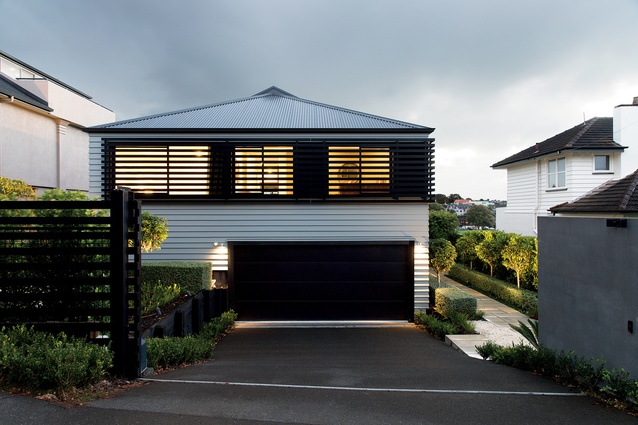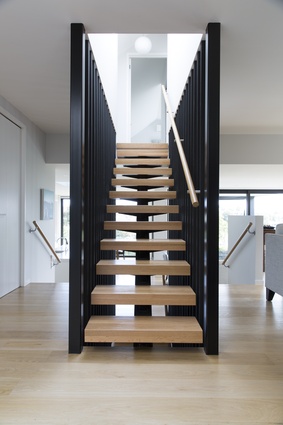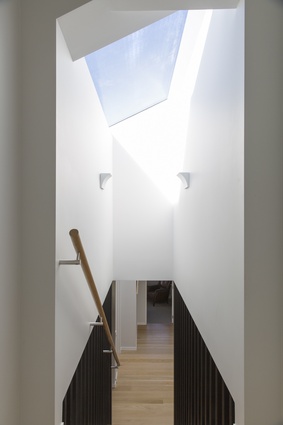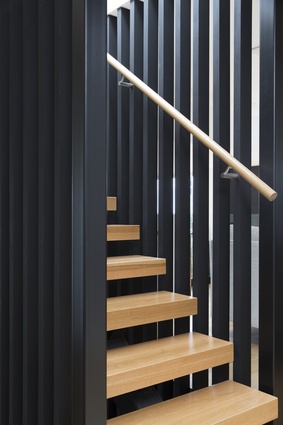Houses revisited: Kohimarama house
A house beyond repair sees a planned renovation project become a new build, first published in 2015.
Initially, the owners of this property in the Auckland suburb of Kohimarama were intent on undertaking a renovation. However, attempts to salvage the 1930s weatherboard house that stood on the site proved too difficult – the house had had its day.
For architect John Irving, this meant that a renovation project had now become a total rebuild, or a ‘new house renovation’ as he puts it. He chose to pay homage to the old building by working within the existing footprint while at the same time reallocating the interior spaces. To give the new house a heart of its own, he oriented the interiors around a sculptural, central staircase.
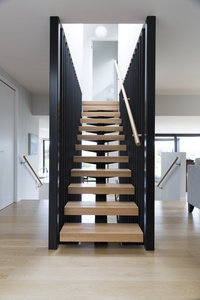
“This staircase is the generator for everything in the home; it brings light into the centre of the house through the skylight above and the different levels radiate off it. We wanted to get away from the era of the old house with its fat footprint and the classic dark hallway to access rooms from. For a home that is very much about entertaining, the stair provides a kind of backbone, allowing different journeys and pathways through the various living spaces,” he says.
The stair treads are a pale oak to match the flooring and extend from a central steel base. The black painted pine verticals that make up the balustrades do not touch the treads, giving a sense that the stairs are floating within the screened space. This is accentuated by the fact that the stairs continue below to the garaging, so the drop below each tread seems vast. The skylight above is angled to the line of the roof, adding to the sculptural impact of the feature.
Living options are many in this house. A raised living area overlooks the kitchen, dining and lower living room through glass balustrading. The lower living area spills out onto a covered, heated outdoor room, which is sheltered from the elements and overlooks sports fields beyond. On the other side of the central staircase, a Japanese-style sliding screen door provides some privacy and division between entertaining spaces and the bedroom quarters.
Moving away from the levels of the old house, the master bedroom is on a split level, perched above the outdoor room. This allows for access of views and also privacy from the rest of the home. Plenty of glazing with glass balustrading means this bedroom can be opened up to the breeze in summer.
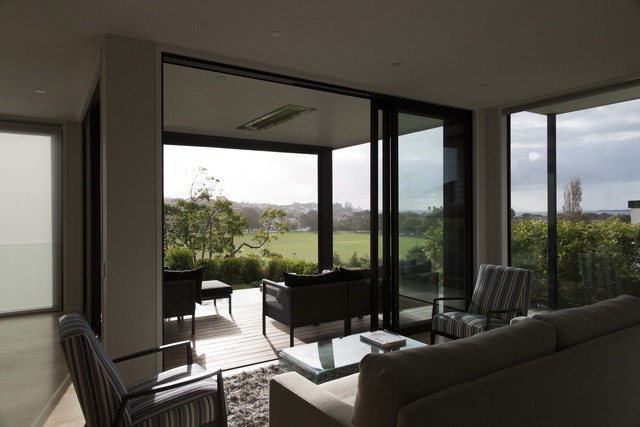
Fixed louvres were used to provide privacy on the street side of the house, which has ample glazing. Along with the external colour palette of greys and blacks, the horizontal lines of the louvres help to give the exterior a contemporary look.
“The horizontal aspect of the external louvres, along with the lines of the fencing, works to visually ground the house from the street. Then when we are inside, we have spun it around with the vertical lines of the staircase and the skylight above giving the interiors some lift and light,” says Irving.
Click here to see more Houses Revisited. And sign up to our email newsletters to receive Houses Revisited straight to your inbox.
Note: These are stories from our archives and, since the time of writing, some details may have changed including names, personnel of specific firms, registration status, etc.

